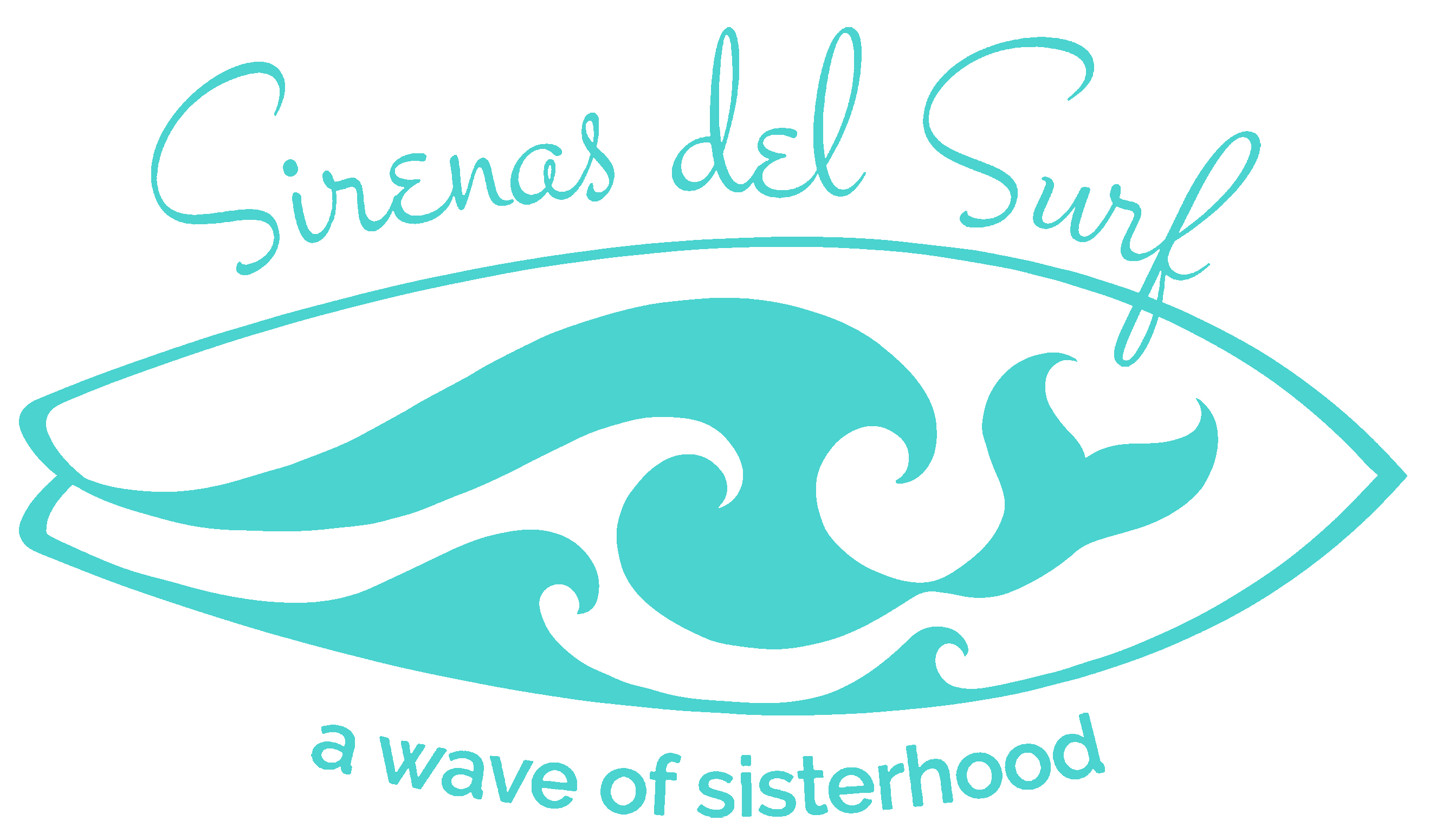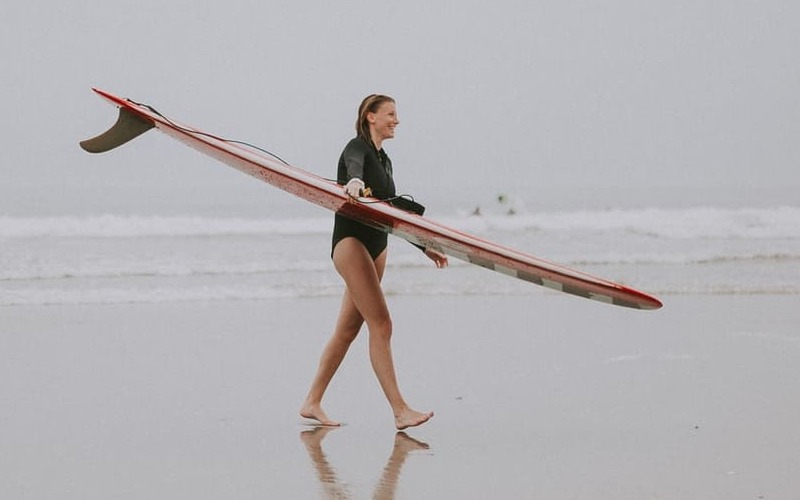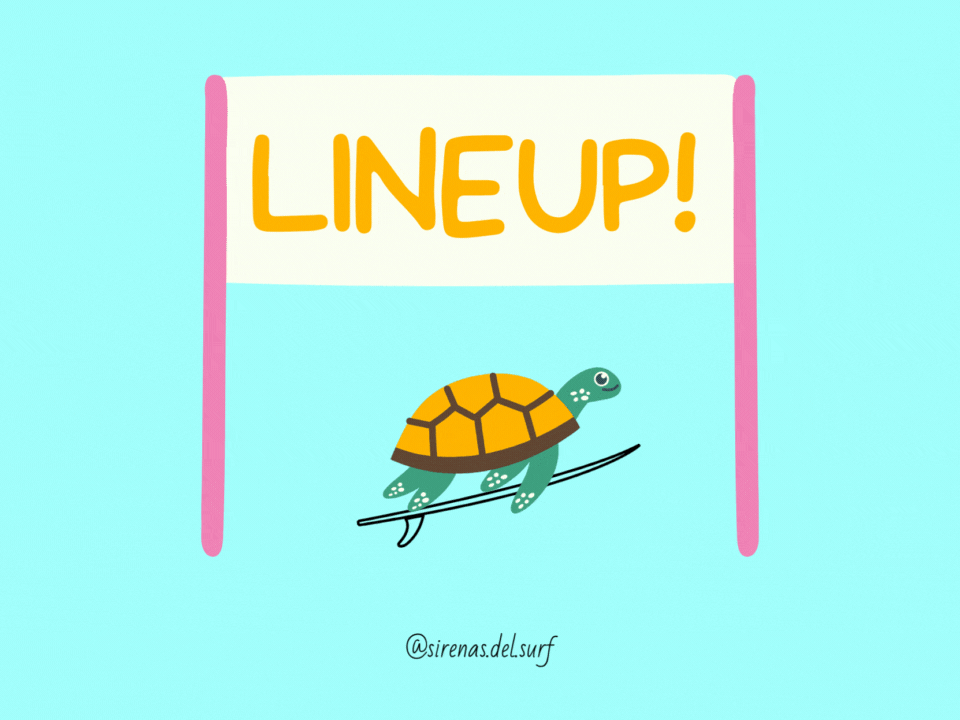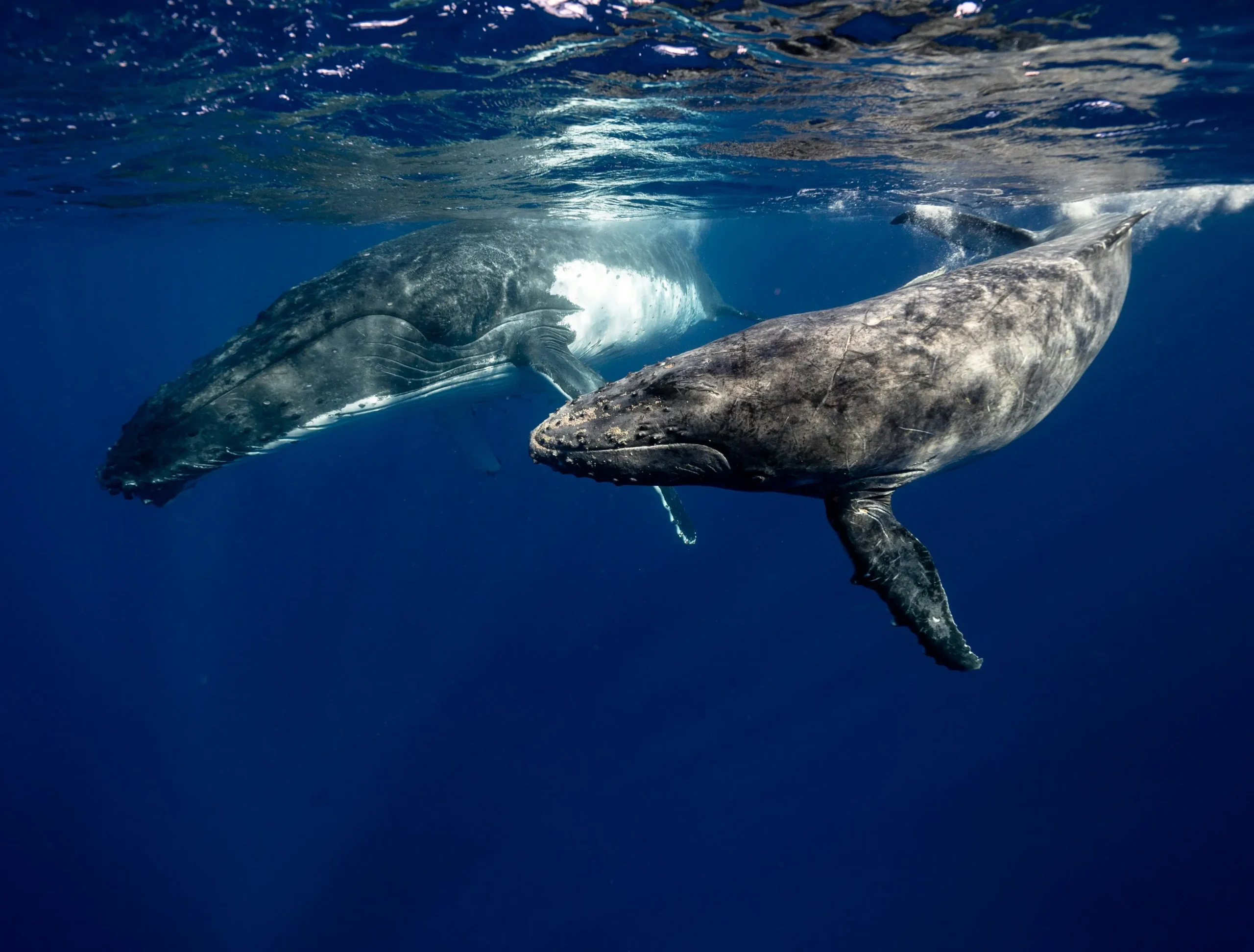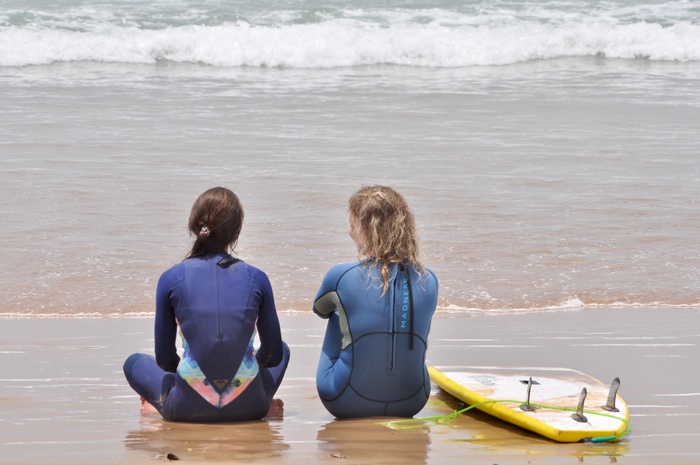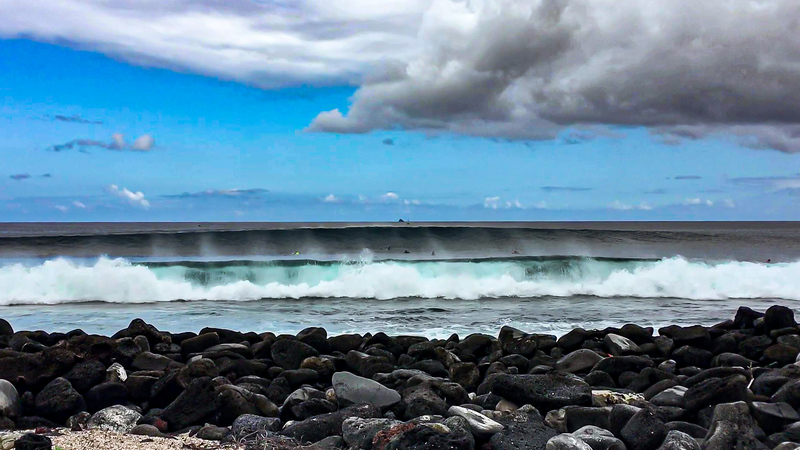Hi, mermaid! This post is for you if you are about to rent or buy a surfboard and you are not sure which one is the right for you.
Getting a Surfboard: The Complete Guide
Choosing your first surfboard properly will make a huge difference in your surfing process. It depends on many factors you will see in this post, but feeling confortable, in balance and connection with the board and the ocean is the main thing.
This post was written by me, Iva, and also in collaboration with Caro, a friend, beginner surfer and journalist. So you can have the perspective and advice from both, beginner and advanced surfers.
Buy a new or second hand Surfboard
This decision is quite personal, because depends on many factors.
In my case, when I was learning to surf, I was afraid of using large surfboards because a stupid incident, so I decided to buy a customized surfboard.
My first surfboard was a shortboard, 6.0, but pretty wide and thick. It floated as much as a funboard but was light and easy to handle outside and in the water. Was the perfect board for me.
Before talking about YOUR board, let’s see features, types and parts of a surfboard, because it is necessary to know to choose yours.
Ok, theory now, in the case you are thinking on your first surfboard, take in mind the following factors:
- Your height
- Your weight
- Your skills and/or fitness (how often do you train at the week)
- Your surf level (beginner, intermediate, advanced)
Properties and features of a surfboard:
Surfboard dimensions
Lenght
The lenght of your board is measured from the nose to the tail.
If you are learning, It’s recommended that your board be at least 20 to 40 cm longer than your height.
That would be, approx:
- If your height is less than 170 cm, your board should be 6.8″ (203 cm),
- If your height is between 170 and 185 cm, your board should be 7.2″ (218 cm),
- and, If yoir height is more than 185 cm, your board should be 7.6″ (229 cm).
Also, you need to consider your weight, to determine the volume of the boards in litters. The volume in litters, for beginners, is recommended at least 36 litters.
That would be determined by the lenght, width and thickness.
Width
The width of the board is measured from rail to rail (edge to edge), and the wider your board is, more stable will be, thereby, will be easier to stand up and ride your waves.
For beginners the width recommended is 19 to 22 inches.
Thickness
The thickness determines the floatability. The thicker your board is, more will float and you’ll have more balance to stand up. And also, the waves pushed you more easily (you’ll have to paddle less).
I recommend the thickness of your board be of 2 to 3 inches.
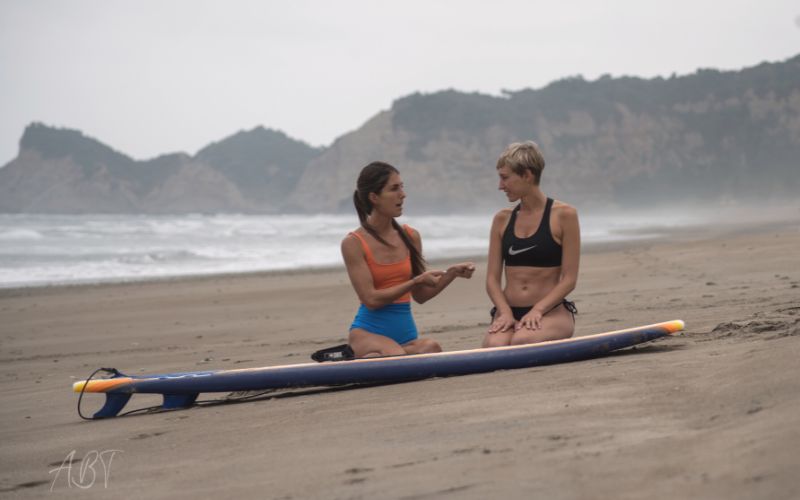
Your surf level and fitness regarding the surfboard
As well, we said that we need to take in mind the fitness or skills. If you already are a sportsgirl or you are easy learner, you can be more flexible with the measures when choosing your first surfboard.
The important thing is that you feel confortable, and your board allows you to catch as many waves as possible. The more waves you catch, more you practice, faster you learn and the more you have fun!
Parts and Types of a Surfboard
This information is important to understand in what consist every part of a surfboard, is normal to not pay much attention to it, at first.
When I chose mine, I wanted to have the most beautiful board. But, most of the time, the coolest is not the right one for us. Personally, I wanted a fish, I loved the fish tail, and the different fish models that exist. At the end, I chose a board with nose and tail rounded, and that was what helped me to learn to surf faster.
Let’s see below why:
Parts of a Surfboard:
Nose
Is the part that faces forward (being belly on the board.) There are different shapes of nose, can be rounded or pointed.
Rounded have more surface, therefore, are more stable.
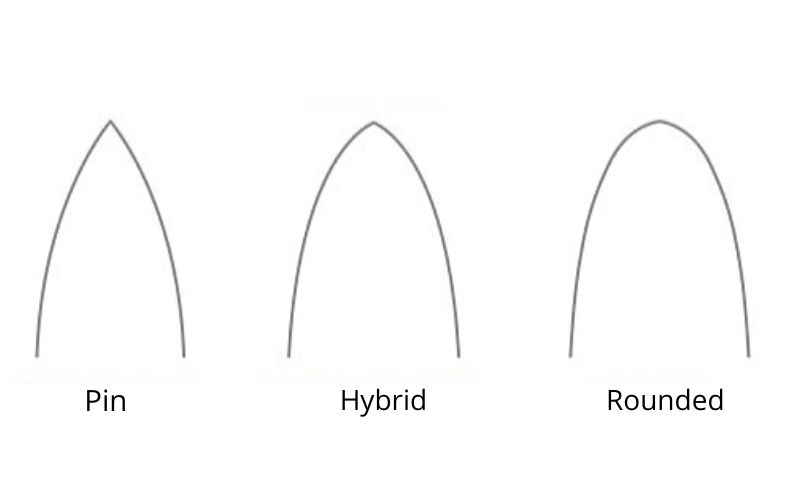
The hybrids are a mix between rounded and pointed, and are also stable. But if you are an intermediate or advanced surfer, this nose will complicate the manoeuvrability.
And the pointed are, in general, for advanced surfers. With this tip is easier to duck dive.
The nose also have a curvature or rocker, that depending on how steep are, plays a different role.
If the rocker is flat, will be a faster surfboard but harder to handle. If you are learning, I recommend you this one, because you don’t need to focus on turn or handle. For now!
If the rocker is sharp, in other words, the nose is pointing upward, will be a very manoeuvrable surfboard but slower.
Let’s continue with the middle, the soul or stringer.
Soul of the surfboard: also called stringer
It’s a line that passes through the middle of the board, from the nose all along to the tail. Sometimes is not visible, depending on the color or material of your board. But inside, is there, mainly made from wood, and makes the board more stiffness, avoiding it breaks or bend.
The soul or stringer define the center of the board and is where our feet should be to maintain the balance.
There are also surfboards without soul.
The rails
Are the edges of the board and run at the sides, from the nose to the tail. The rails help us to hold and provide direction to the board. Also the rails are in contact with the face of the wave.
So you can get barreled!
There are in different shapes and thickness.
But, basically, if the rails are higher the board will float more, if are curved, will be easier to carry, and if the rails are more rounded the board will be more stable.
Tail
Is at the back of the board.
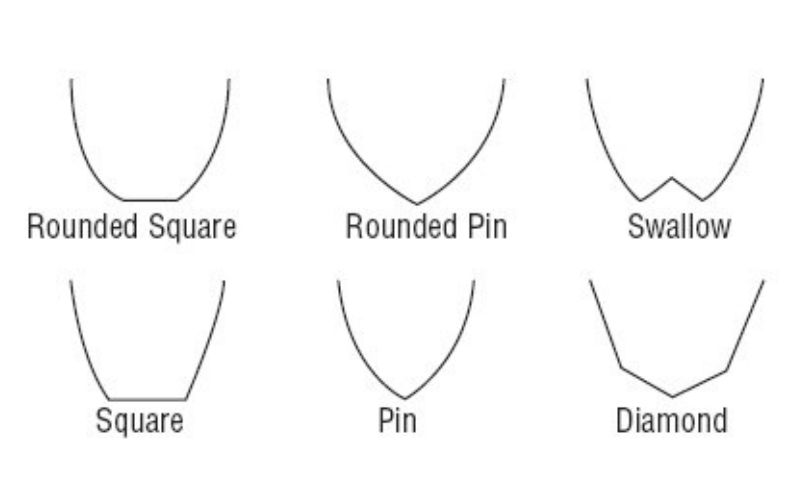
There are squared, rounded or squash, totally rounded, fish, pintail, diamond.
In general, much wider is the tail, most suitable will be for small waves. Also, having more area on the back side, will float more and will be easier to paddle.
Fins
The fins are those pieces that look like a shark’s fin.
The role of the fins is guide the water that pass beneath the board, in other words, are like the helms of the board, will provide stability.
There are different types and materials, can be fixed or removable. And can be one large, two symmetrical or until five.
Leash and leash plug: your savior!
The leash is the cable that links the board to us. It has a velcro that goes on our leg and in the other tip it links to the board by a plug and a smaller rope.
Types of Surfboards
There are plenty of Surfboard’s types, and each one can have variations and become hybrids. But the most common are the following in the illustration:
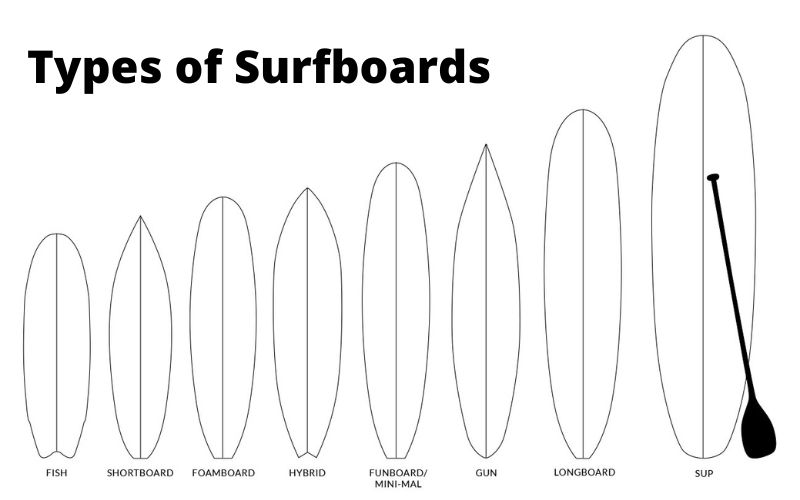
How to choose your first rental surfboard
You’re ready: you already have your surf lessons scheduled, ready to dive into the water, and now you need to rent your first board.
Did you think about the board that you will use when surfing? Although the board does not make the surfer, it is our tool in the sea. Having a suitable board is key for those first days.
This part of the post was written by Caro, and hope it helps you to choosing your rental surfboard.
Tips to rent your first board, based on my experience as a beginner surfer
1. Experiment
The surfboard should feel comfortable for you. It is normal that the first days you experience difficulty when standing on the surfboard and you gotta be patient with yourself. Some people pop up on their board on the first class, on the first wave; others pop up at the end of their first class, others in their fifth class.
Focus on yourself and how you feel with the surfboard. Do you stay afloat on it? Do you feel safe? Can you keep a minimum balance when trying to stand up?
And most important… Are you having fun?
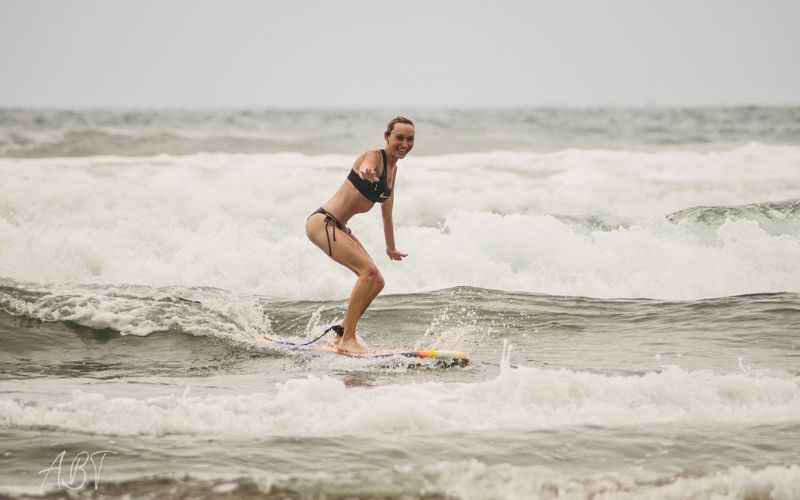
2. The more stability, the better
An ideal initial board to learn to surf is usually a longboard or a funboard – the material is thick and the foam of the funboard makes them an ideal option when you are taking your first jumps in the sea, since they are softer than the usual fiber of regular and lighter boards.
Longboards are larger, and give you more stability, which is key when you are learning. The board must be suitable for your height and weight. It’s easy to get frustrated seeing other surfers and wanting to ride a shortboard – the smaller boards with a narrower nose and lighter.
It is true, many of us were inspired to surf after seeing women in movies with their shortboards doing wonders when riding a wave… however, when you start you need stability and that is why you need a longboard. Which brings me to my next point:
3. Do not rush. Surfing is a sport that needs patience.
Have in mind your possibilities and the time it will take you to learn. Surfing is a wonderful sport precisely because you never stop learning and perseverance pays off. This means that progress is seen little by little.
The thoughts that turn your head when you are the only beginner at sea are normal; it is common to start to get exasperated. Even if you don’t feel like Chloe Calmon or Anne Marie from Blue Crush in your first week or you still have a hard time standing up on the board in first class, believe me that even if you don’t feel it, progress is there, every time you go to classes surfing, every time you put on your leash and go into the water. Remember that.
Although the ideal to have a longboard or a funboard to start with, this is not the scenario in which some of the surfers got started. Many surfers started with the board that someone lent them – often a shortboard – and although it took more time and demanded more balance and frustration, it is possible.
But always remember the gift of surfing and be very patient with yourself.
4. Don´t be afraid to ask for another surfboard!
Boards are an investment and therefore many surf schools and instructors do not have a great variety. In general, they will give you a surfboard to learn close to what you need.
In my experience in several surf camps and surf schools, it is that if the board does not feel ideal or it feels more difficult than usual to pop up on the board, don’t be afraid to change.
I recently had a group class and they gave me a board on which I had a hard time standing up and I started to despair. Switching to a wider funboard was the solution; I improved quickly and was able to return to the surfboard that was originally assigned to me on day two.
Choosing the proper surfboard and your surfing improvement
Now that you know more about the types and parts of a surfboard and how can influence your learning process, we encourage you to try all the boards as possible and experience which one is the right for you.
As we said before, the right board is important but also is the practice. The more you practice, the more you will improve.
Planning a Surf Trip or taking an intensive surf course is the best way to learn or improve your surfing, check out our Surf Trips for women in Ecuador!
If you still struggle with choosing your board, tell us on the comments and we’ll be happy to help you!
Hope this post helps you, and if you liked it, remember to share it!
Thank you for being here!
Iva and Caro.
